Cracks in the Golden State: California’s Political Landscape Is Shifting
Voter dissatisfaction over costs, taxes, and a GOP surge reshape the state.
⏰ 5 min
This column presents key findings from a “California Tracking Data” report, recently compiled by George Nassar, a partner with Public Opinion Strategies. Nassar’s analysis draws on recent statewide public opinion data from the Public Policy Institute of California (PPIC) Statewide Survey conducted in June, along with other publicly available voter registration trends up to February of this year. A clear picture of a populace increasingly dissatisfied with the status quo and a political map undergoing significant, often overlooked, changes emerges.
Pocketbook Pain Is Driving Voter Attitudes
California’s political bedrock is feeling the tremors of voter discontent, as rising costs and a hunger for fiscal responsibility reshape the state’s political future.
When asked to name the most critical issue facing California, voters across all parties point to the same: cost of living, economy, and inflation. Nearly one-third (29%) listed it as their top concern in June, far outpacing housing costs (17%), homelessness (9%), or environmental concerns (4%).
And they are not optimistic. As of June, a significant majority, 77% of Californians, expect bad financial times over the next 12 months—the worst economic outlook since the pandemic. Just 12% say their financial situation has improved in the past year, the lowest percentage recorded in over a decade.
These are not abstract policy debates. Voters feel it daily—in rent hikes, insurance premiums, utility bills, and grocery aisles. When families sit down to pay monthly bills, they see the numbers that matter most. When parents drive their kids to school and calculate gas costs, or when seniors choose between medication and groceries, these economic realities become deeply personal.
Californians Want Lower Taxes, Not Bigger Bureaucracies
This economic unease is not just about personal finances; it is also shaping how Californians view the role of government and their tax dollars.
When forced to choose between higher taxes and more services or lower taxes and fewer, voters chose fiscal restraint. A 52% majority in June, including 60% of independents, said they would rather pay lower taxes and have fewer services.
This suggests that even in one of the most progressive states in the country, the appetite for government expansion has limits. Sacramento keeps growing in size and cost of government, but voters are increasingly skeptical that it delivers any value. People want to know where their money goes and want results they can see and feel daily.
GOP Gains Reshaping Battleground Districts
This sentiment for smaller government and fiscal caution is manifesting in opinion polls and significant shifts within the state’s voter registration landscape.
From the close of books in 2022 to February 2025, Republicans netted 460,000 more voters than Democrats statewide in California voter registration. The momentum is even more striking in key congressional districts.
In 11 key battleground House districts—historically competitive seats, many now represented by Democrats—Republicans have made clear, measurable gains in voter registration. These shifts indicate rising engagement and enthusiasm in places where razor-thin margins often win elections. Every new voter registration represents someone who decided to take action, to make their voice heard in the political process.
Several of these districts—like CA-13, CA-45, and CA-27—are key battleground districts. Voter registration trends suggest they will be much harder to hold in 2026. For example, in CA CD13, Democrats gained 1,660 voters while Republicans gained 14,611 between March 2022 and February 2025, resulting in a net Republican gain of 12,951. Similarly, CA CD45 saw Democrats gain 4,458 voters compared to Republicans’ 12,484, for a net Republican gain of 8,026. In CA CD27, Democrats gained 1,181 voters, while Republicans gained 9,679, leading to a net Republican gain of 8,498. The political map is not static. Beneath the surface, it is beginning to move.
I let my friendly neighbor AI program help me put the “where are my readers” chart above into something more digestible below.
California’s Political Weather Is Changing
These tangible shifts in voter registration are just one indicator of a broader change in California’s political climate.
None of this means that change is inevitable. However, most Californians believe the state is heading in the wrong direction (56% in June). Governor Newsom’s job approval has dropped to its lowest level, with 53% disapproving in June, and a majority of voters (53%) disapprove of the state legislature’s job performance in June. (It is worth mentioning that since the PPIC survey, and after Newsom decided to joust with President Trump, his numbers have improved a bit.) This shows that the foundation of one-party control is less stable than it looks outside. Californians are increasingly dissatisfied with the results they are getting from the state’s political leadership and are signaling they are open to alternatives.
For those who believe in limited government, fiscal responsibility, and structural reform, this moment represents a significant risk and a profound opportunity to shape California’s future. The question becomes whether political leaders will listen to what voters say or continue down a path that seems increasingly disconnected from ordinary Californians' lived experiences.
If you would like a copy of Nassar’s report with a whole bunch of charts, just send me a note at jon@sodoesitmatter.com with the title CHARTS, and I will send you the .pdf document.



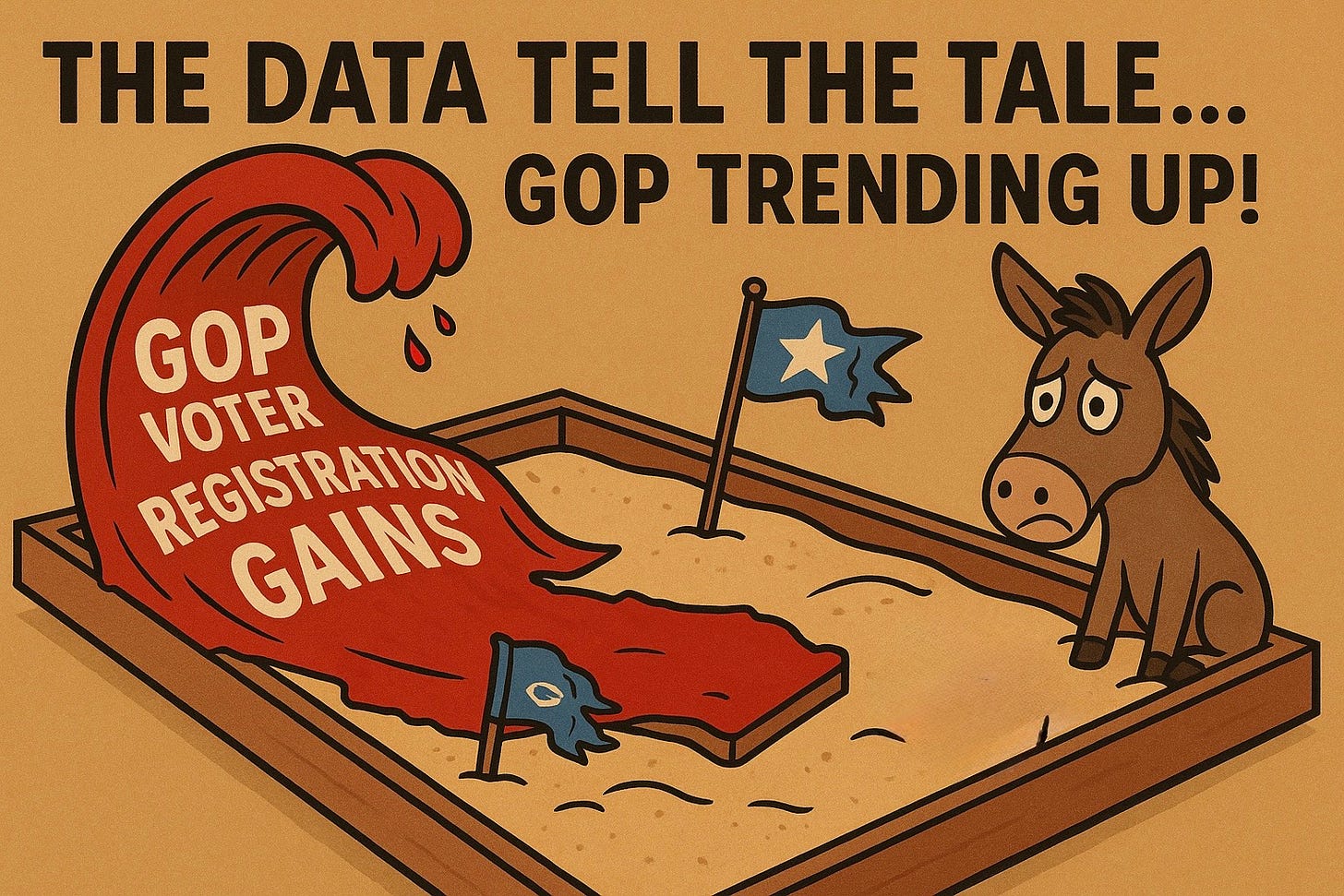
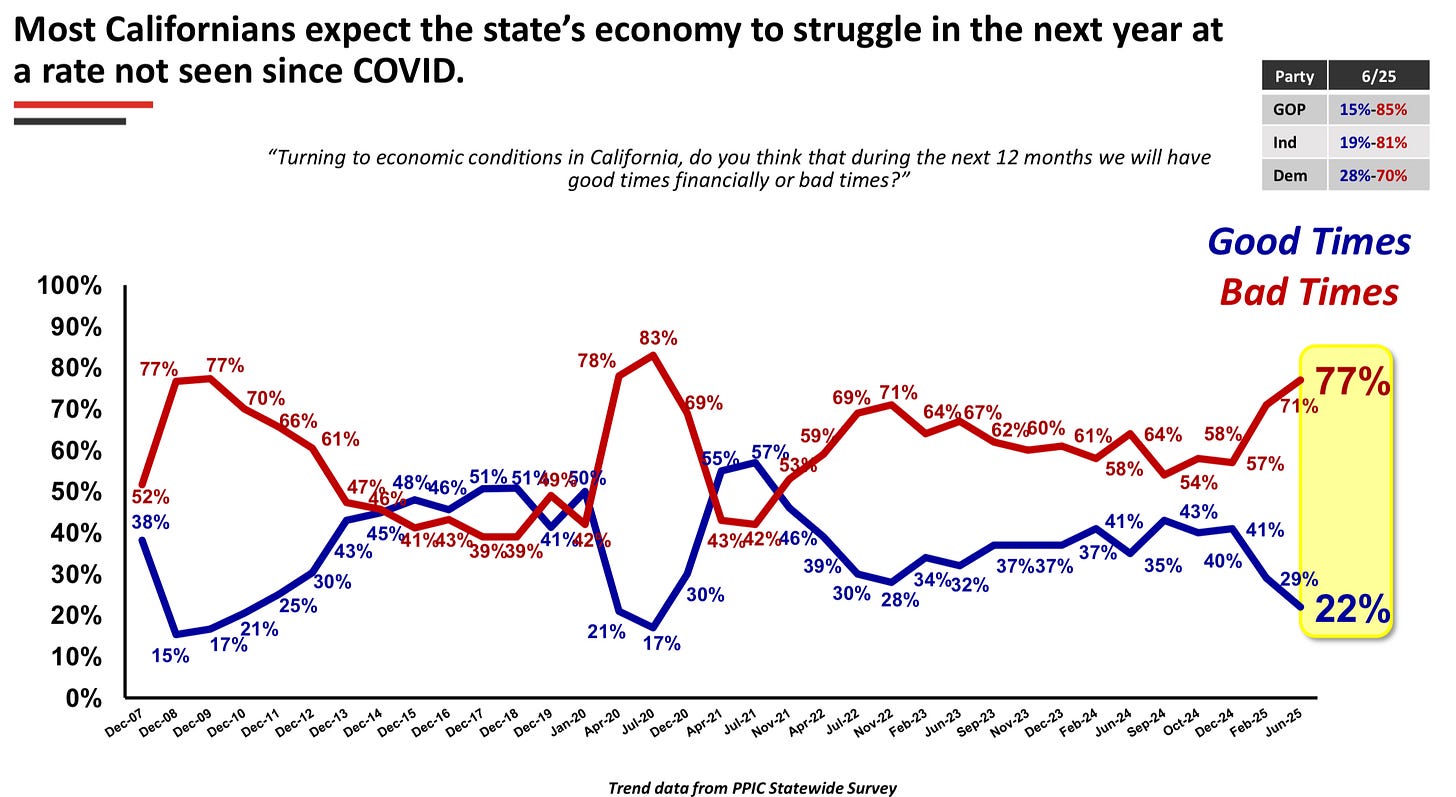
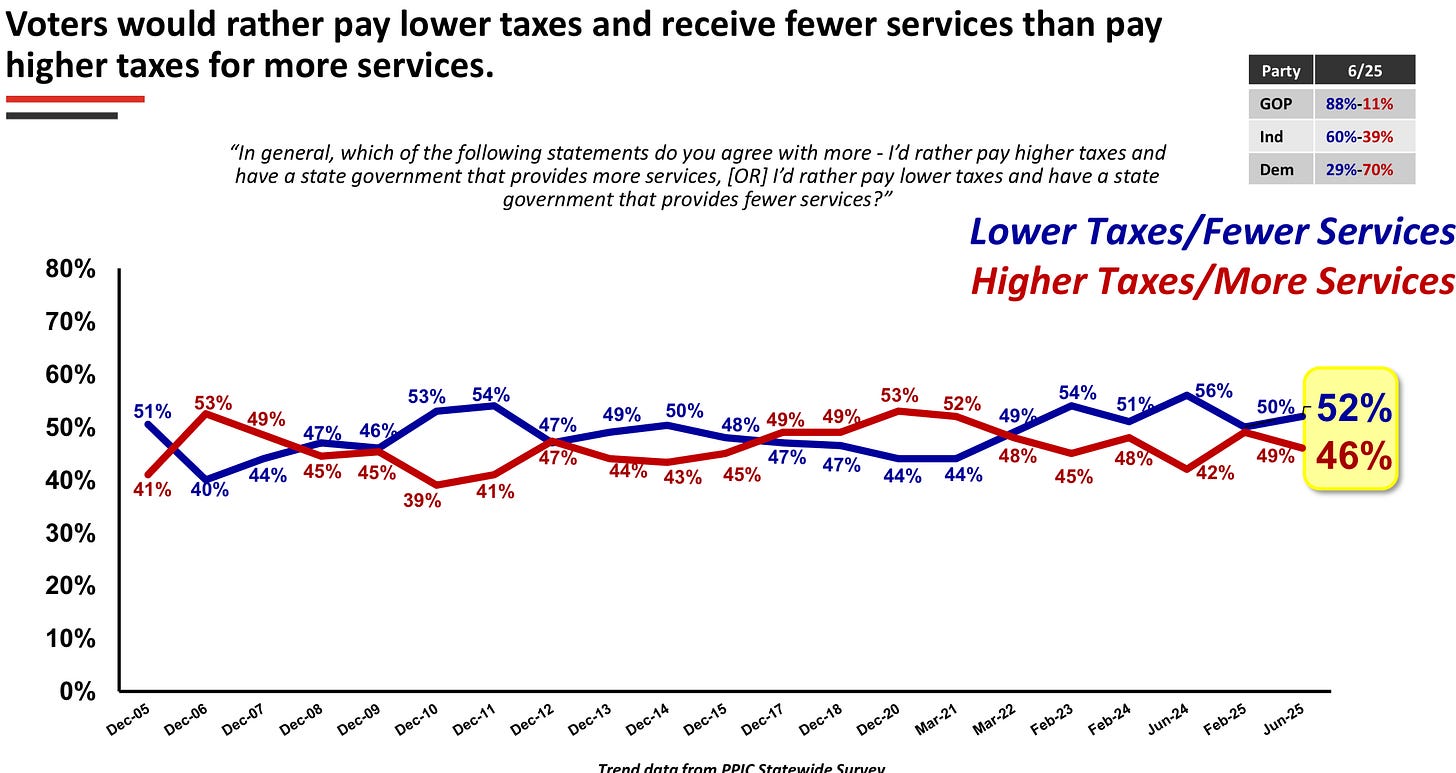
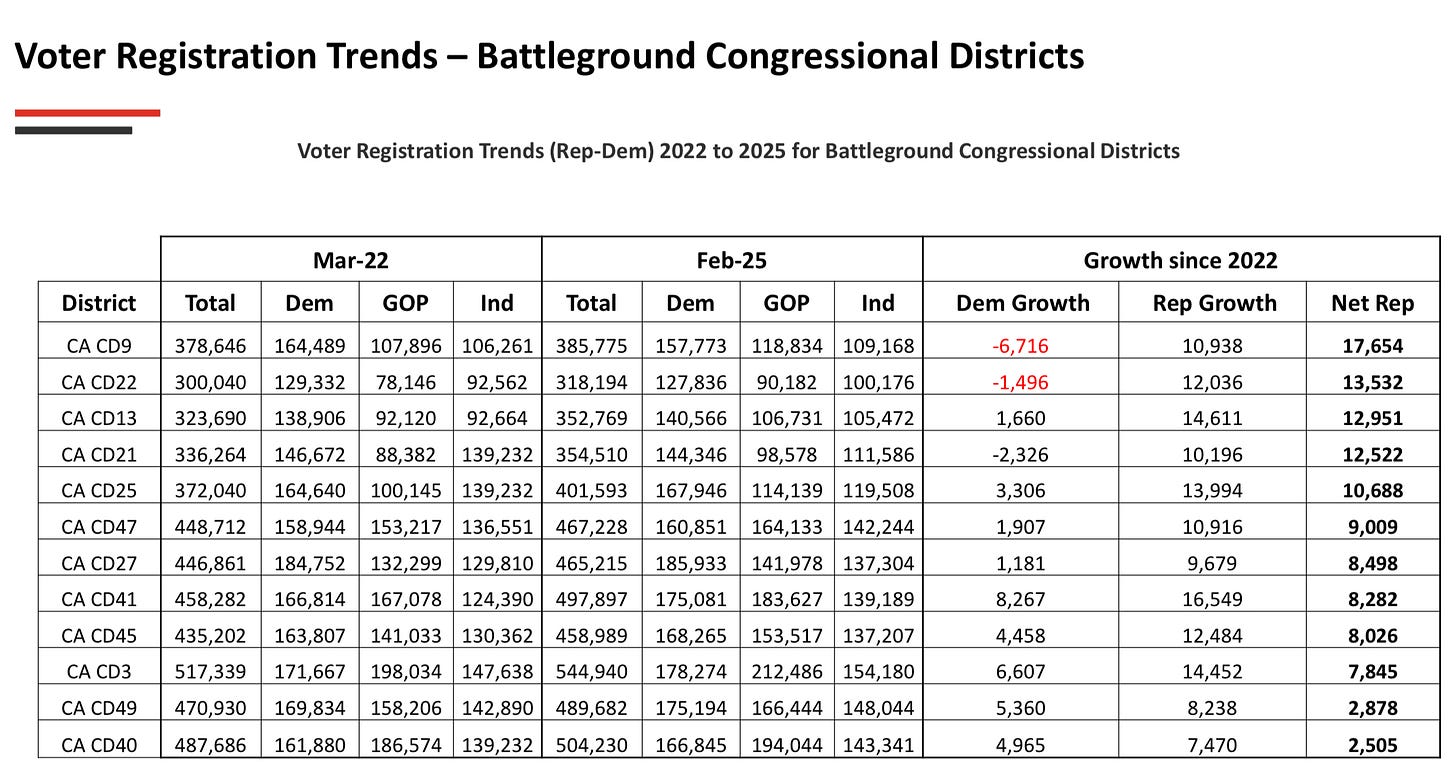
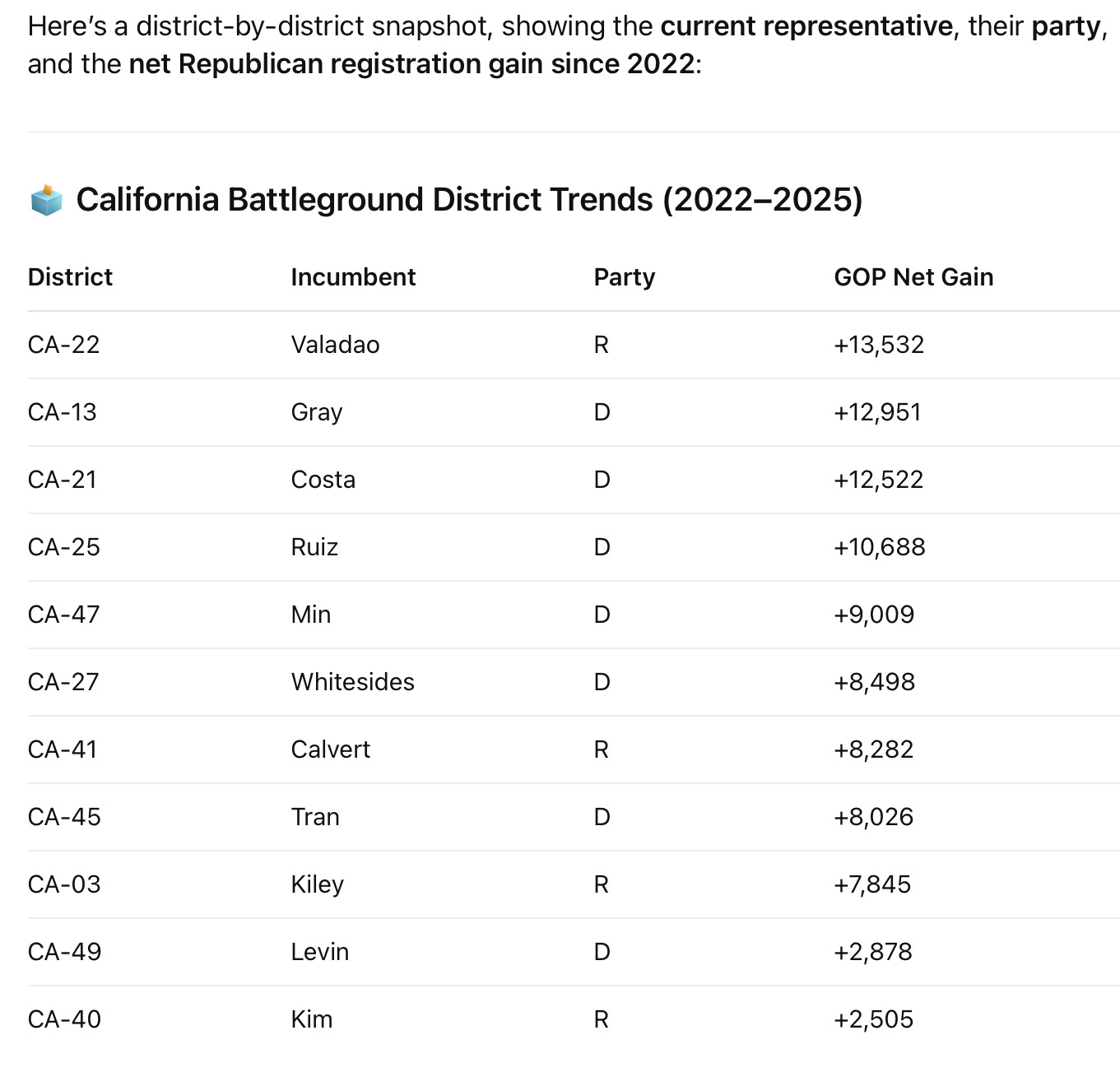
maybe. but so many people love big gov except for its cost and occasional massive failures.
Big gov is the problem and until people see that they will still tend to vote for it and hope better people will "do it better"
on a separate note: am i the only person here that sees the cal coastal comm as by far the worst influence at the state level?